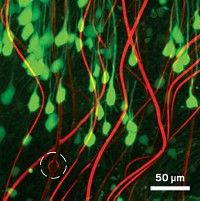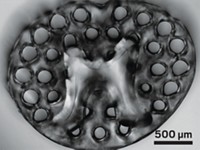Advertisement
Grab your lab coat. Let's get started
Welcome!
Welcome!
Create an account below to get 6 C&EN articles per month, receive newsletters and more - all free.
It seems this is your first time logging in online. Please enter the following information to continue.
As an ACS member you automatically get access to this site. All we need is few more details to create your reading experience.
Not you? Sign in with a different account.
Not you? Sign in with a different account.
ERROR 1
ERROR 1
ERROR 2
ERROR 2
ERROR 2
ERROR 2
ERROR 2
Password and Confirm password must match.
If you have an ACS member number, please enter it here so we can link this account to your membership. (optional)
ERROR 2
ACS values your privacy. By submitting your information, you are gaining access to C&EN and subscribing to our weekly newsletter. We use the information you provide to make your reading experience better, and we will never sell your data to third party members.
Analytical Chemistry
Scientists Watch Neural Connections Strengthen In Live Mice
Neuroscience: New method visualizes the biochemical changes that happen at synapses during learning and memory
by Michael Torrice
February 5, 2015
| A version of this story appeared in
Volume 93, Issue 6

A new technique allows neuroscientists to peer into the brains of live mice and monitor the molecular signatures of learning and memory. With the method, researchers can watch in real time the strengthening and weakening of connections in neural circuits to understand how the brain learns new behaviors or how disease disrupts memory formation.
At the cellular level, learning and memory involve forming and tuning connections, or synapses, between neurons. The strength of these connections depends on the number of AMPA receptors (AMPARs) sitting on the cell surfaces within these synapses. More AMPARs create stronger synapses.
Richard L. Huganir of Johns Hopkins University School of Medicine and his colleagues wanted to watch how synapses change in response to an animal’s experiences, so they developed a way to monitor AMPARs coming and going. They engineered a gene that codes for an AMPAR tagged with a fluorescent protein and inserted it into mouse embryos. The protein glows only when the receptors reach the nerve-cell surface.
When the mice were 10 weeks old, the researchers installed windows in the animals’ skulls so they could study individual neurons with two-photon microscopy. The scientists then gave the animals a stimulus to trigger synaptic changes: They flicked a whisker 10 times per second for an hour.
In neurons that received information from the tickled whisker, fluorescent signals increased 30% in the cells’ dendritic spines, which are structures that sprout off of neurons and form synapses (Nat. Neurosci. 2015, DOI: 10.1038/nn.3936).
Previously, neuroscientists focused on the size of these spines to gauge synaptic strength, with bigger spines indicating stronger synapses. But the new technique showed that spines can accumulate more AMPARs without getting bigger, suggesting that researchers have been missing some synaptic changes.
This makes the new technique a more direct measure of synaptic strength, says Alison L. Barth of Carnegie Mellon University. She thinks that besides being impressive, the method will force researchers to reevaluate previous studies that relied on spine structure data.





Join the conversation
Contact the reporter
Submit a Letter to the Editor for publication
Engage with us on Twitter